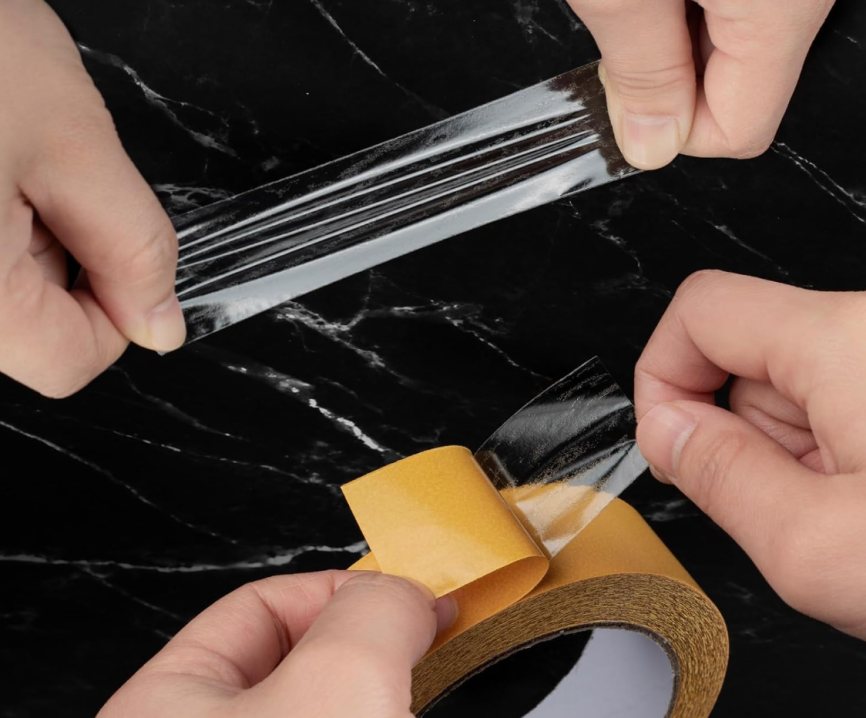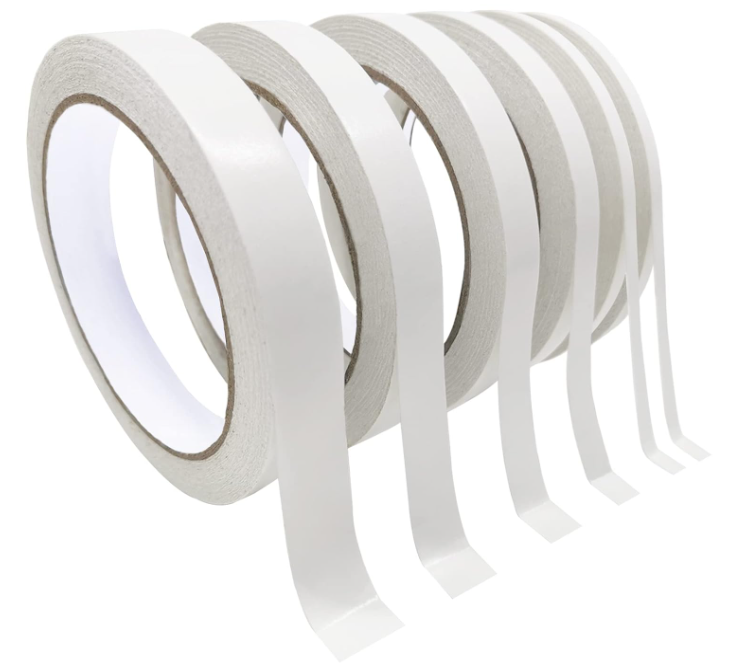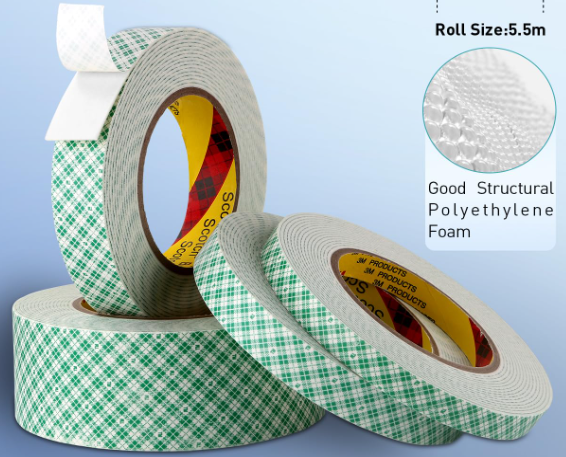Double-Sided Tape: A Versatile Adhesive Solution
Whether it's gift packaging, retail displays, or food labeling, many companies face a common challenge: how to achieve a secure bond while maintaining a polished appearance?
Traditional single-sided tape often obscures the design or leaves marks, detracting from the overall appearance. In contrast, double-sided tape, with its invisible adhesion and versatile adaptability, offers a more efficient solution for the packaging industry.
In its work with food and coffee brands, MTPAK has noticed that double-sided tape has become an indispensable material in auxiliary packaging. Whether securing gift box inserts, displaying on display shelves, or providing temporary reinforcement during shipping, choosing the right double-sided tape can significantly enhance the practicality and professionalism of your packaging.
What are the core materials of double-sided tape?
The performance differences between double-sided tapes depend primarily on the choice of adhesive layer and backing material. Common core materials include:
Backerless Type
Comes solely with the adhesive layer, without an intermediate backing material. It offers excellent flexibility and can adapt to irregular or curved surfaces. It is commonly used for laminating mobile phone screens or securing electronic components.
Film-Based Type
Using polymer films such as PET and PVC as the backing material offers excellent heat and weather resistance and is commonly used for long-term bonding, such as automotive component installation or industrial bonding.
Foam-Based Type
Using materials such as PE foam and EVA as the backing material, it offers a thicker, more cushioning property and can compensate for surface unevenness. It is suitable for billboards, decorative strips, or home installations.
Paper-Based Type
Using kraft paper or release paper as the backing material, it is easy to remove and is suitable for short-term or temporary bonding, such as office document fastening or crafting.
What are the common types of double-sided tape?
Double-sided tape can be categorized into the following types based on specific needs:
Regular double-sided tape: Suitable for securing lightweight items such as paper and lightweight packaging.
High-tack double-sided tape: Strong adhesion, suitable for hard materials such as metal, glass, and wood.
High-temperature-resistant double-sided tape: Suitable for use in environments above 100°C and commonly used on electronic components and automotive interiors.
Removable double-sided tape: Leaves no residue after removal, making it suitable for exhibition layouts and retail displays.
Electrically/thermally conductive double-sided tape: Used for heat dissipation and circuit bonding in specialized electronic products.
What are the uses of double-sided tape?
Double-sided tape has a wide range of applications, with the following areas being particularly prominent:
Packaging Industry
Used for gift box linings, label attachment, and carton packaging. The invisible adhesive prevents damage to the packaging and enhances its aesthetics.
Retail Display and Advertising
Advertising printing, poster placement, and shelf labeling. Foam-based double-sided tape provides stable adhesion on uneven surfaces.
Industrial Manufacturing
Automotive: Used for securing vehicle logos, weatherstrips, and interior trim.
Electronics: Used for screen lamination and circuit board insulation.
Home Appliances: Used for long-term attachment of decorative strips and buttons.
Cold Chain and Logistics
For label application and temporary attachment, double-sided tape can withstand low temperatures and prevent it from falling off during transportation.
Office and Daily Life: Document organization, wall decoration, and DIY crafts. Removable products prevent surface damage.
How to use double-sided tape correctly?
Step 1: Surface Preparation - Ensure the surface to be bonded is in optimal condition.
This is the most overlooked yet crucial step. The goal is to achieve a "clean, dry, and flat" surface.
Cleaning: Use a non-woven cloth dampened with isopropyl alcohol (IPA) to wipe the surface thoroughly to remove oil, dust, and release agent. Avoid touching with your bare hands, as this can leave grease.
Drying: Ensure the surface is completely dry and free of any residual moisture.
Smoothing: Inspect the surface for any indentations, bumps, or loose fibers, which can reduce the effective contact area of the tape.
Step 2: Tape Processing - Precautions before Lamination
Sizing: Cut the tape precisely to your needs, avoiding excessive stretching.
Removing the Release Liner: Typically, remove one side of the release liner first (e.g., the white release liner). Avoid direct finger contact with the adhesive surface during this operation.
Environmental Control: The ideal application environment is between 15-35°C (62-71°F) and a relative humidity of 40-70%. Excessively low temperatures can reduce initial adhesion, while excessive humidity can affect long-term stability.
Step 3: Initial Lamination - Avoid Air Bubbles and Misalignment
Alignment: Gently touch one end of the tape, after removing the release liner, to the reference edge of the adherend at a certain angle (e.g., 30 degrees).
Rolling: Using a scraper or a dedicated pressure roller, roll the tape evenly and smoothly from one end to the other, gradually removing any air. Avoid placing the entire tape down and pressing it down, as this can easily cause air bubbles.
Step 4: Final Compaction and Curing - The Finish Is Not Done After Laying
Sufficient Compaction: Immediately after initial lamination, apply sufficient pressure with a pressure roller (for example, use a rubber roller with a pressure of approximately 0.5 MPa, rolling back and forth 2-3 times) to ensure a complete bond between the tape and the adherend.
Station Curing: Peak adhesion does not occur immediately after application. A certain amount of time (usually 24-72 hours) is required for the adhesive to fully penetrate the adhered surface and achieve maximum bond strength (i.e., "final adhesion"). During this period, avoid heavy loads or peeling forces.
Conclusion
Double-sided tape, a highly effective and invisible adhesive tool, comes in a variety of materials and types, meeting diverse needs from packaging and retail to industrial manufacturing. Proper selection and proper use of double-sided tape not only enhances product appearance and bond stability but also optimizes operational processes and reduces maintenance costs.
MTPAK is a provider of customized flexible packaging solutions, offering a variety of customized services. Please contact us if you require assistance:
Email:account@mtpak.com
Contact us:https://mtpak.com/contact-mtpak



